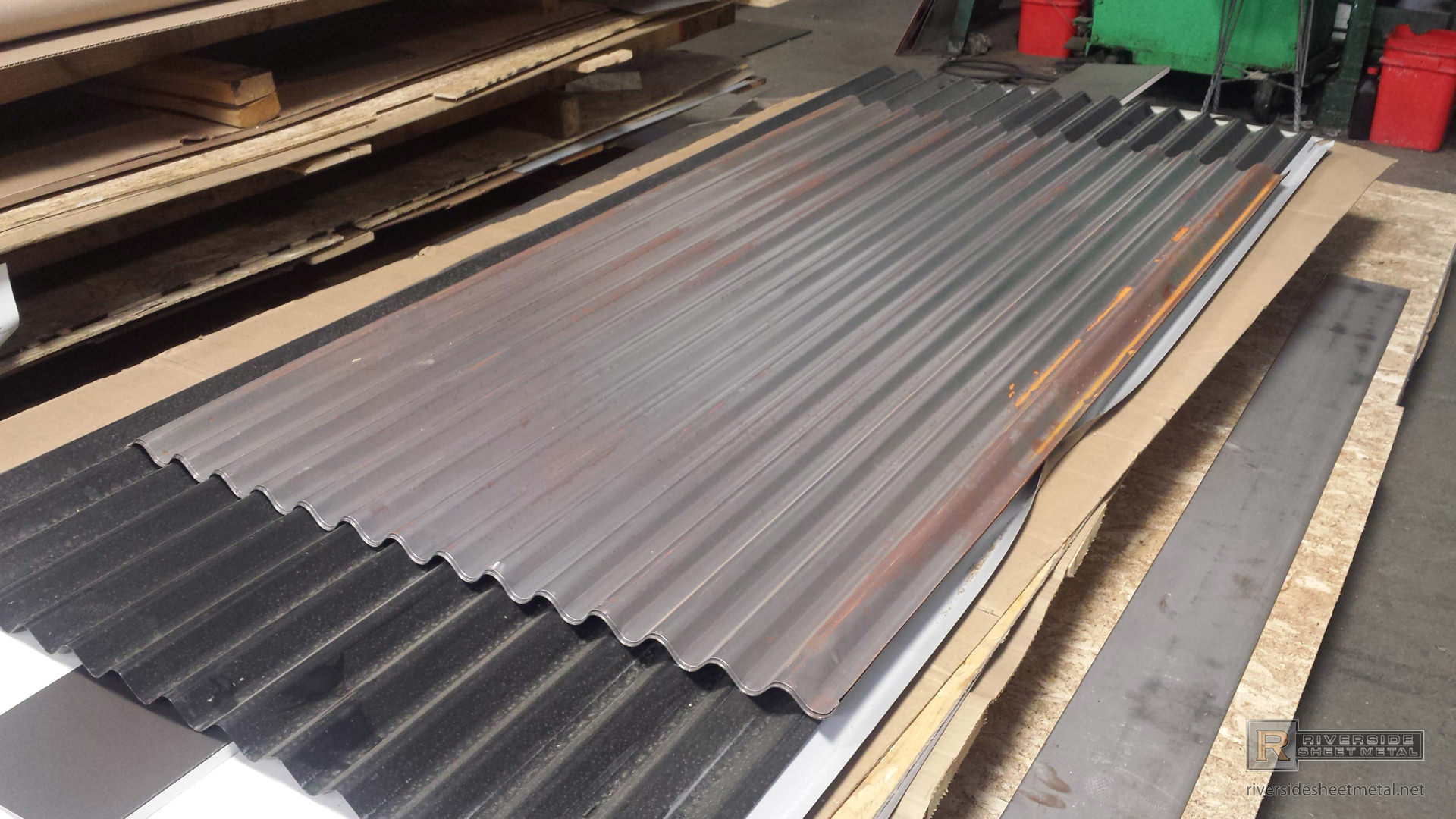

For commercial and industrial applications, tables are based on a maximum overall height of ten metres and a 500 year design return period. For domestic applications, the pressures and spans are based on a maximum: eaves height of six metres, roof pitch of 35 degrees and total roof height of 8.5 metres. Spans are determined by wind speeds for non-cyclonic areas.

Capacity tables are in limit state format. Span tables have been developed by determining wind pressures in accordance with AS4055-2006 for domestic applications and AS/NZS 1170.2:2002 for all other applications. The Wind Capacity Tables are based on testing in accordance with AS1562.1-1992 and AS4040.0, 1 and 2-1992. The following distributed load capacities apply.Material Specifications Material Properties Restricted access roof, 0.55mm G550 steel Corrugate has a maximum end span of 1000mm and a maximum internal span ofġ500mm.
#CORRUGATED ROOFING MANUAL#
Long spans may require the specification and use of side lap stitching screws – see Section 2.3.2C Installation Information: Layout and Fastening of Technical Manual If this is done, the distributed load capacities given in the chart should be reduced using a multiplying factor of 0.6. Use in serviceability categories (1) or (2) can allow the reduction of fasteners to 3 screw fasteners/sheet/purlin. Wherever the designer wishes to ensure the risk of fastener over-tightening will not cause dishing of the crest of the profile rib.When required to enable the fixing system to accommodate the thermal movement of long sheets – see Section 2.1.3.4 Thermal Movement of Technical Manual.Contact Dimond for specific advice in these design cases. On end spans, or large internal spans where the Ultimate Limit State distributed load is limiting.Profiled metal washers are recommended for use: The Limit State Load / Span Capacity Chart is based on 5 screw fasteners/sheet/purlin without the use of load spreading washers (except for Duraclad material, which must be fitted with profiled metal washers and 36mm EPDM seals). Low wind zone = 0.68kPa, Medium wind zone = 0.93kPa, High wind zone = 1.32kPa, Very high wind zone = 1.72kPa and Extra high wind zone = 2.09kPa.įor screw size range and fastener/washer assembly refer Section 2.2.3.1 of Technical Manual. High, otherwise AS/NZS 1170.2 should be used
#CORRUGATED ROOFING CODE#
design loads in accordance with the MRM Roofing Code of Practice can be used for buildings less than 10m If necessary, “No Roof Access” signs used.Īs a guide for non-specific design the following S.L.S. Walls or roofs where no foot traffic access is possible or permitted. Walkways installed where regular traffic is expected, and “Restricted Access” signs placed at access points. No congregation of foot traffic expected.Įxpect occasional foot traffic educated to walk only on the purlin lines, in the profile pans, or carefully across two profile ribs. While these categories are given for design guidance to meet the serviceability limit state criteria, foot traffic point load damage may still occur if there is careless placement of these point loads.Įxpect regular foot traffic to access the roof for maintenance work and able to walk anywhere on the roof. The capacities given do not apply for cyclone wind conditions. To obtain an ultimate limit state load we recommend factoring the serviceability load up by 1.4 in-line with NZMRM guidelines. Serviceability loads have been derived by test to the NZMRM testing procedures. The span capacity of Corrugate is determined from the Corrugate Limit State Load/Span Capacity Chart using the section of the chart appropriate to the grade and type of material and to the category of serviceability selected from the three categories below. No pull through of fixings or fastener withdrawal resulting in sheet detachment due to wind up-lift (outward) loads. No deflection or permanent distortion that would cause unacceptable appearance, side lap leakage or water ponding, due to foot traffic point loads, inward or outward wind loads or snow loads. Design Criteria for Limit State Capacities.End span capacities given in this table are based on the end span being 2/3 of the internal span.Refer Section 2.2.1.8 of Technical Manual. – System must include Safety Mesh if intended for use as a Restricted-Access roof. – Serviceability Limit State loads are not applicable to the Duraclad material, as it does not experience permanent deformation. If design requirements exceed this limit, contact Dimond for specific advice. Loads given are limited to a maximum of 4.5 kPa.Loads given are based on 5 screw fasteners/sheet/purlin.Category 3 maximum spans are limited as a guide to achieving a satisfactory appearance for wall cladding. Category 1 and 2 maximum spans are based on static point load testing as a guide, and further limited by practical experience of roof performance under dynamic foot traffic loads. In any category, spans above the maximum shown should not be used.


 0 kommentar(er)
0 kommentar(er)
